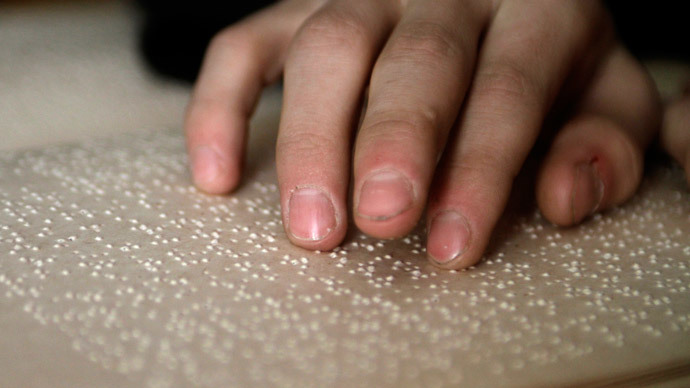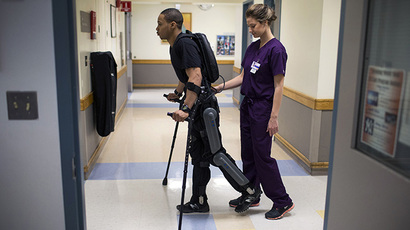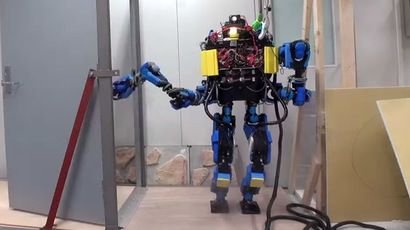New ring-like device reads out loud to the blind

For blind individuals, reading may soon become as simple as pointing and listening
Researchers at the Massachusetts Institute of Technology have spent the last three years designing the "FingerReader" – a new, wearable audio reading device that can read text in books, newspapers, magazines, restaurant menus, and even electronic devices.
The ring-like device can be worn on the finger and features a small, high-resolution camera capable of detecting and analyzing text. When it’s on someone’s finger and they point in the direction of text, a computerized voice can efficiently read the material out loud in real-time. It even uses audio prompts and vibrations to signal which part of the sentence it is reading, or if the hand wavers away and towards other text.
Although there have been no details regarding the FingerReader’s price or availability, scientists believe they can get the cost down into affordable territory by the time it hits the market – one which, in the United States, includes more than 11 million people with vision impairments.
Speaking to the Associated Press, lead MIT researcher Pattie Maes described the gadget by saying it’s like "reading with the tip of your finger and it's a lot more flexible, a lot more immediate than any solution that they have right now."
As noted by Wired, scientists used a test group of four people – all of whom were born blind – to try out the device, record its efficiency, and make adjustments.
"Overall, the users reported that they could envision the FingerReader helping them fulfill everyday tasks, explore and collect more information about their surroundings, and interact with their environment in a novel way," the researchers wrote in an evaluation paper.
Before the FingerReader can actually be sold, though, it needs to be tweaked in order to work more efficiently on touchscreens. Although the gadget can read off of an electronic screen just fine, using a finger to scroll through a touch device can alter what it’s reading and make the device ineffective.
Still, 62-year-old Jerry Berrier of Watertown, Massachusetts, who tried out the device, said there's a lot to like.
"Any tool that we can get that gives us better access to printed material helps us to live fuller, richer, more productive lives,” Berrier, who was born blind, told AP.
"Everywhere we go, for folks who are sighted, there are things that inform us about the products that we are about to interact with. I wanna be able to interact with those same products, regardless of how I have to do it.”














